
Miramichi Mixed Bag
For six days ending on May 28 Dawson Hovey of Fredericton and I fished the Cains, SW Miramichi, and NW Miramichi with guide Jason Curtis for the various species of game fish that are all available at this stage of the season. We caught both sea run and river-resident brook trout, lots of striped bass, and danced with salmon, but were unsuccessful in boating either a kelt or a bright fish. It was very late for kelts – though a few are still around – and very early for bright fish – though the beginnings of the run were entering the rivers towards the end of our trip.
The weather in New Brunswick was more or less a continuation of the below normal temps that have existed in Maine and New Brunswick all spring, and more of that is forecast. We did have some sunny days, but they were really cold. Additionally, water flow down the brooks and tributaries is still heavier than normal, and we had no trouble running a jet Sharpe canoe all the way up beyond our Mahoney Brook camp on the Cains River. Still I really love this time of the year. We could see the foliage progressing daily from just a hint of green and big red maple buds to a fairly full cover of young leaves by the time we left. The spring bird life in New Brunswick is incredible, and beginning before daybreak a veritable din of bird song pours in through any open window. I had a new personal first for me, as on Tuesday morning I spotted a Baltimore oriole in an old apple tree near my camp.
It was a rainy day on Sunday, and we decided that instead of fishing we would take a ride and visit a couple of Dawson’s friends near Boiestown. Dawson’s son Tristan was also there, and we had a nice tour of the Kenmore Club. From there, Dawson and I drove the rest of the way out to Rocky Brook where Blake Munn gave us a great tour of this famous salmon camp.
I’ll be fishing the Miramichi again beginning on June 11th, and when I return in July I’ll do a wrap up blog on the early summer fishing. I have been keeping up a fairly consistent daily update on my Brad Burns Fishing blog called The Miramichi Salmon Report. Here is the link https://www.bradburnsfishing.com/miramichi-salmon-report/. I report on fishing activity, water conditions, flies that are working, and other activity that I hear along the river. It’s as close as you will get without being there.
Brook Trout
The population of sea run brook, which less than 10 years ago was quite robust in many locations within the Miramichi watershed, has now fallen on hard times. Most fingers point to the outsized population of striped bass that can gobble up all but the very largest brook trout. The sea run brookies must share the lower estuary with striped bass during much of the year. The argument that the sea run brook trout problem is due to striped bass is especially compelling when you realize that the brookies are just one more fish on the list that was formally reasonably abundant, but have become very scarce in lock step with the increase in bass.
We caught brook trout both in the SW Miramichi and in the Cains River, but the sea runs came from well up within the Cains. We caught nothing at the mouth of the Sabbies River, but the caretaker there said that he watched two anglers catch several 15” to 16” sea run brook trout there a few days before. Later that day we caught two that size ourselves near Six Mile brook, 10 miles or so further up the river. We flailed away in several other locations without a touch, though we did get a few other resident trout from several locations. The lucky fly for me on the sea runs was an old Maine fly called the Barnes Special fished on a 150 grain Teeny line.
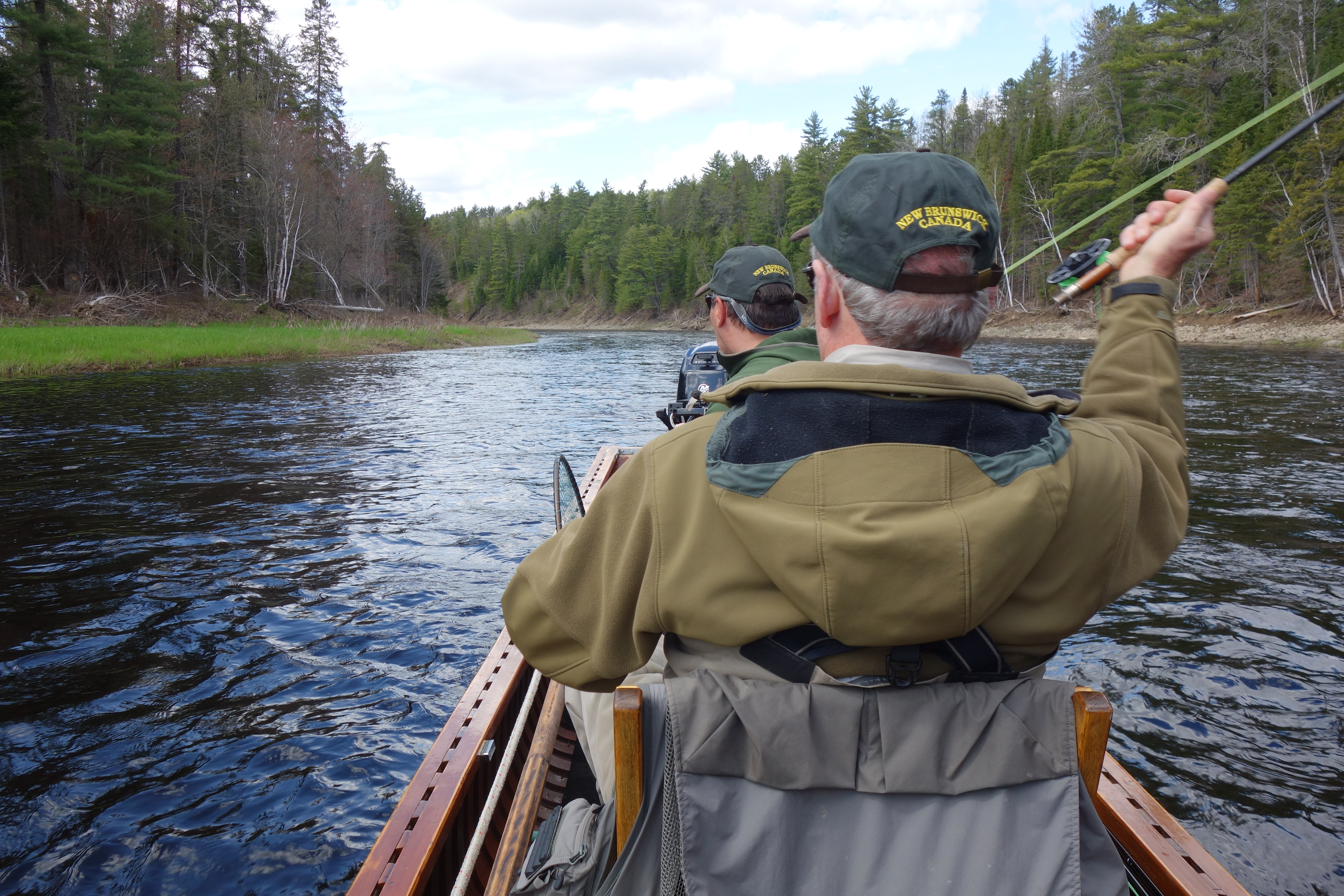
Jason Curtis watches the water while Dawson Hovey prepares to cast into a current seam for brook trout.
Atlantic Salmon
Byron Coughlin of Country Haven sent me a text my first night in camp that said that they were still catching kelts in the lower SW Miramichi. I didn’t fish specifically for kelts during this trip, but I did fish some spots where we at least half expected to hook one – but with no luck. Fishermen on the NW Miramichi began seeing early bright salmon jumping near the head of tide this last week.
A few days before the end of the trip we saw DFO employees putting the net on the Cassilis trapnet framework. We heard later that some fresh salmon had been captured in the net the next day.
My last day in camp, while Dawson fished for stripers on the NWM, I fished all day in hopes of running across a bright salmon on the SW Miramichi. I worked the high water side of Doctor’s Island as well as Campbell’s and Keenan’s. At 5:00 PM, just as I was getting ready to hang it up, a beautiful bright fish jumped out perhaps 150 feet directly downstream from the stern of our canoe. I spent another hour and a half on the river making a complete repeat pass through the pool, but as they say in the U. K. with no joy.
As I reported in blogs written earlier this year, there are a number of factors that leave me modestly optimistic for the 2019 Miramichi salmon run. A new one to emerge is that the Varzuga River on the Kola Peninsula where I fished at this time the last couple of years is reporting a year like old times. That was not the case in 2016, 17 or 18.
Striped Bass
The short word on the striped bass season on the Miramichi is not particularly good, at least through Tuesday. The buzz among striper anglers all this spring has been that the body of fish expected has just not been there, either up on the spawning grounds or further down river. Reports I received today, though, say that the number of fish on the furthest upriver portion of the spawning grounds has picked up. The lateness in fish reaching the spawning area is blamed largely on cold weather.
We had mixed success in our fishing. One day we caught only a handful of fish, and many other anglers returned from fishing empty handed. On a couple of other days we had 60-odd bass of various sizes. Even on those days, however, it seemed like almost all of the fish were being caught in a tiny portion of the area whereas in past years the whole 6 or 7 miles of spawning stretch seemed to be stuffed with stripers.
Two of us casting had about 150 stripers in 3 ½ days of fishing. Among those fish the largest was 36 inches or 90 cm. We landed only 8 or 10 stripers that were larger than the 26”/65cm upper slot limit size. It was work to get our 3 fish per angler limit each day and one day we caught none in the slot. On the other hand there were no really small bass. I’d say the smallest that we landed was about 16 inches. On the Chesapeake Bay spawning grounds males become sexually mature at two years of age, and there are many 12 and 14 inch male fish there trying to spawn with the females. For whatever reason we did not see that on the Miramichi.
We have hoped that the salmon smolts, which are also late due to heavy flows of cold water, would have better luck making it to sea with a reduced amount of stripers present. It remains to be seen how that will work out.
Side Trips

On the right is strapping young John Brophy, Bill MacKay’s canoe race competitor as a young man trout fishing with Charlie Wade – peering in from the back – and friends on the Dungarvon circa 1940.
I think that for most of us, the older we get the more important the non-fishing part of our river time becomes. Dawson has a long-time friend Bill MacKay, who lives upriver in Hayesville. We visited Bill and his wife Joan at their home overlooking the river. Bill is 84, but strong, quick, and can still pole a canoe. He worked for more than 30 years at Rocky Brook where he guided many well-heeled clients. I liked all of them he said with a broad smile. We talked about his competition in canoe races paired with his neighbor Mervin Green – long-time manager of nearby Salmon Brook Camp – when they defeated the equally acclaimed team of Pat and John Brophy on the Doaktown to Blackville run. They went down one side of an island said Bill, and we went the other, and that helped them, but after we came out the other side we soon caught them and won the race that day.
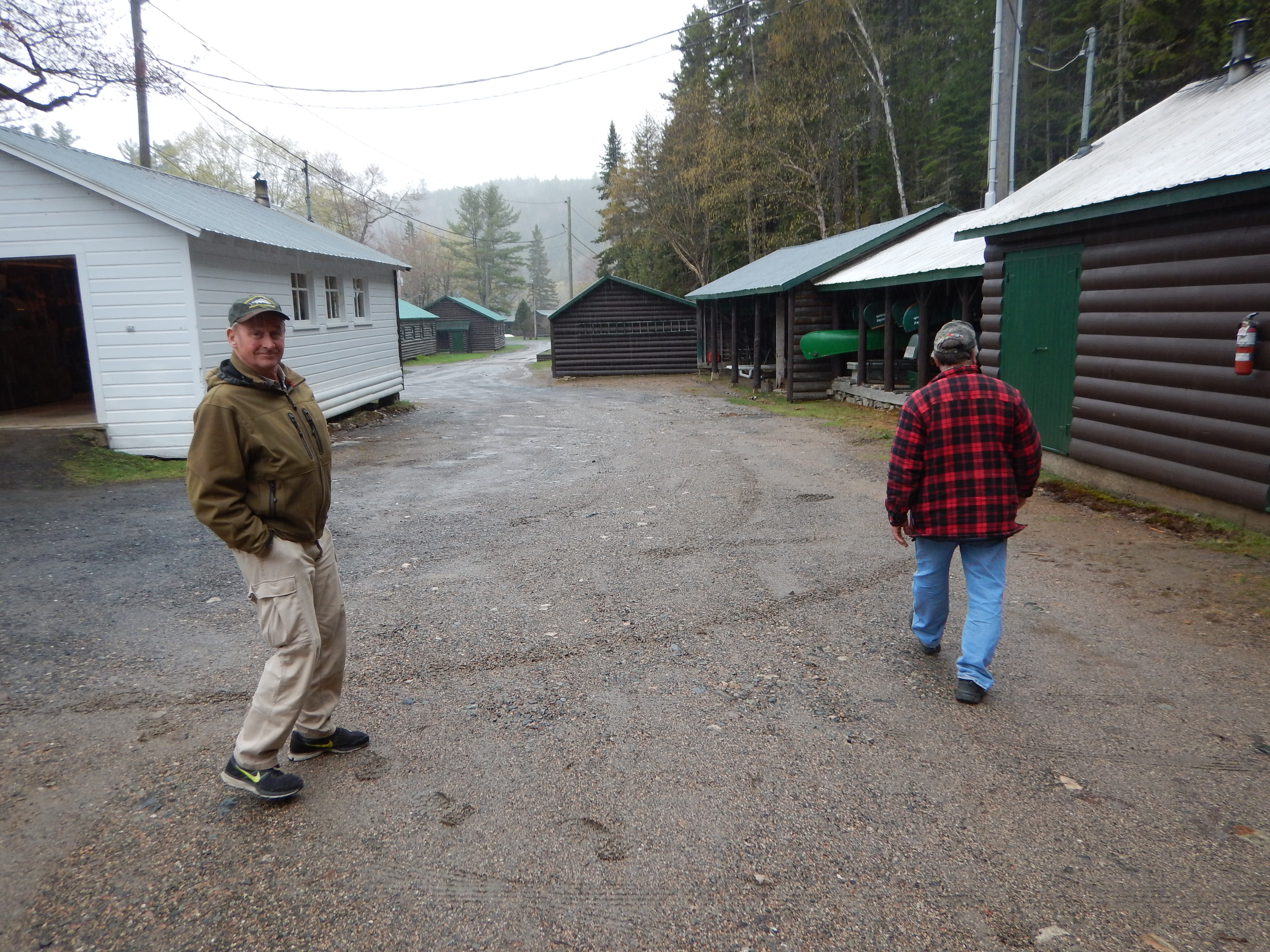
Dawson Hovey on left follows Blake Munn through the various storage sheds of the camp down towards the river.
After visiting the MacKays we drove north across the Miramichi and up to Rocky Brook. For those not familiar with it Rocky Brook is a major tributary of the SW Miramichi, and a small salmon river in its own right with secluded pools located well upriver from the camps. Rocky Brook itself as well as the Miramichi waters in the area have long provided very comfortable fishing for up to 8 anglers. The fast-flowing, cool-water-buffered areas surrounding Rocky Brook offer much better mid-summer angling than lower stretches of the river that excel in the early season and during the fall fishery. At Rocky Brook we had a great tour of the facilities by 30 year employee Blake Munn. For a salmon angler, visiting the famous camps, seeing the perfectly maintained infrastructure, and looking over this storied stretch of the river is nearly a religious experience. Rocky Brook is only fished by invitation. Normally it is available exclusively to clients of International Paper that owns the camps and the private fishing along a big stretch of the upper river. Frequently, though, trips are donated to conservation organizations for their auctions, and many people get to fish the water in that way.
Check out this little video of the Rocky Brook smolt wheel in operation. Blake said they got a beaver in it once, causing quite a commotion on its way to being released…


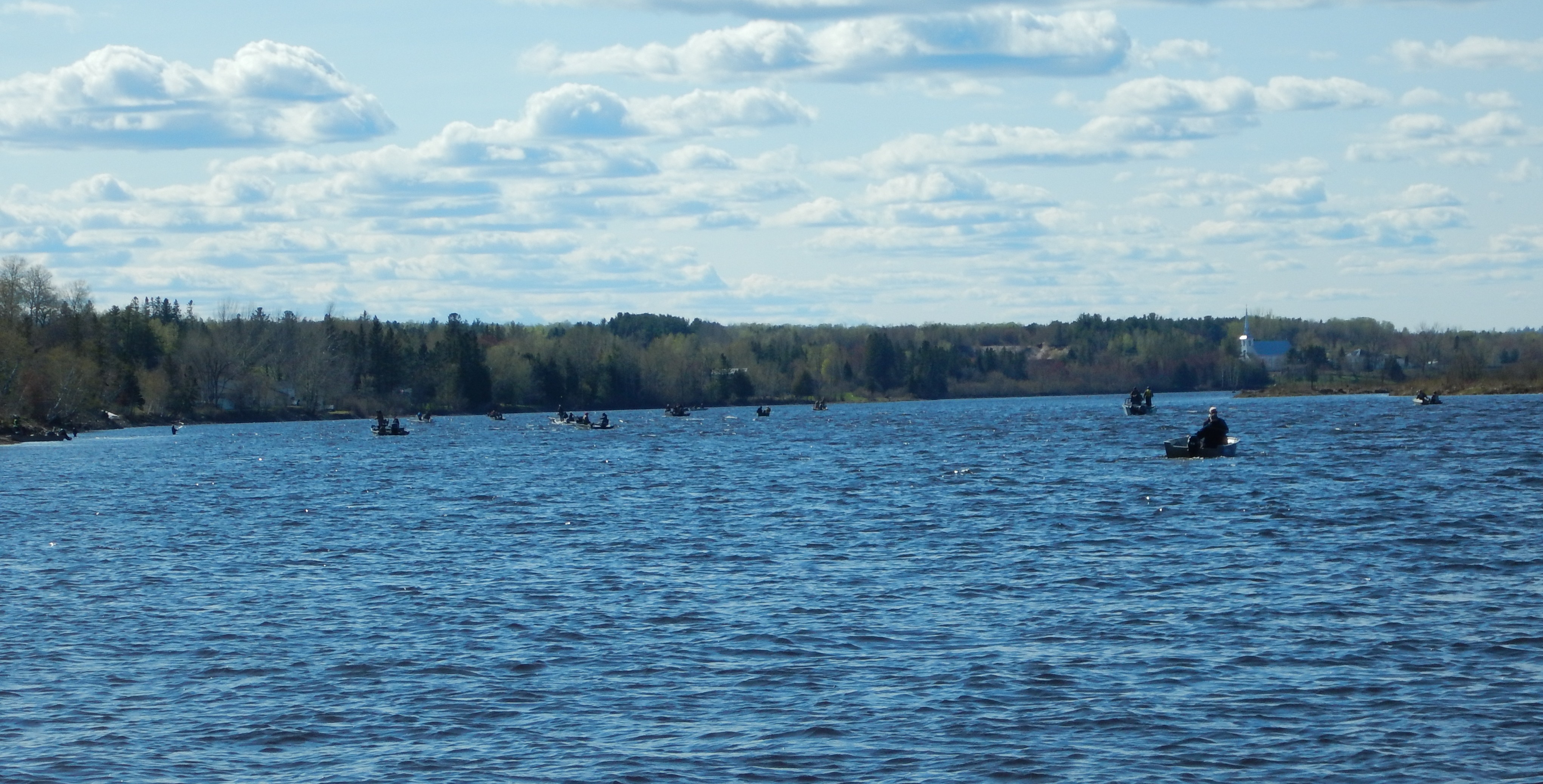
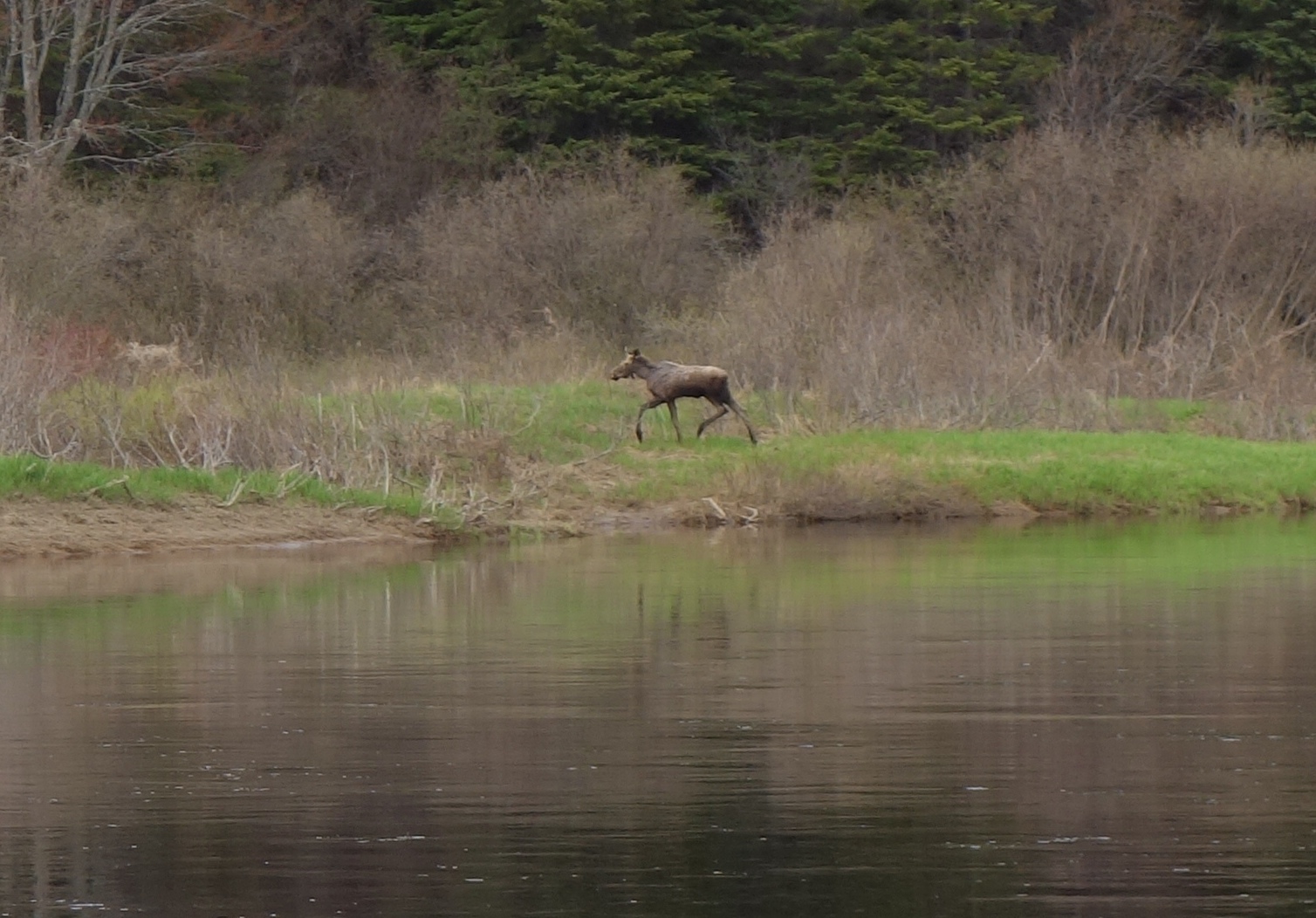
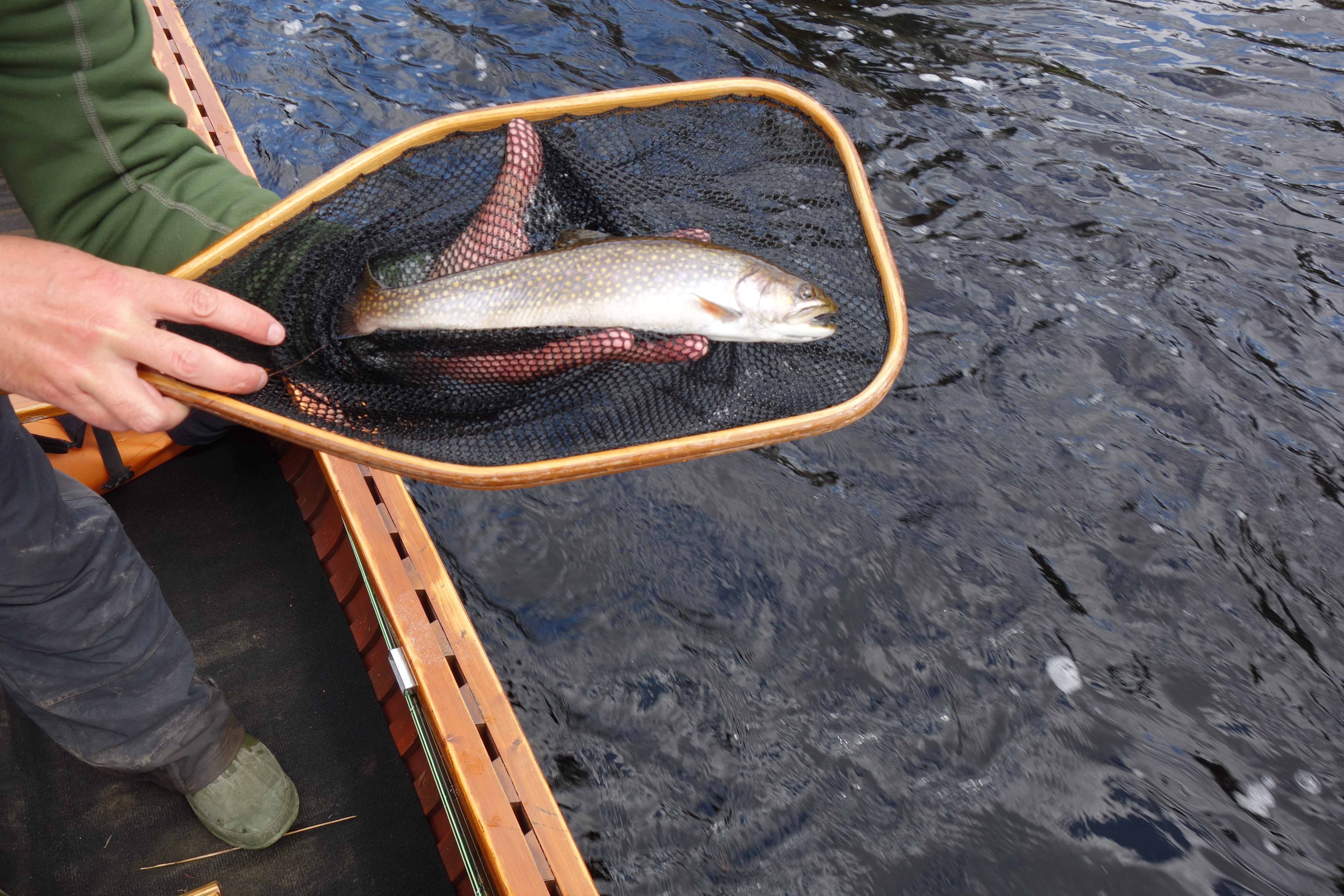
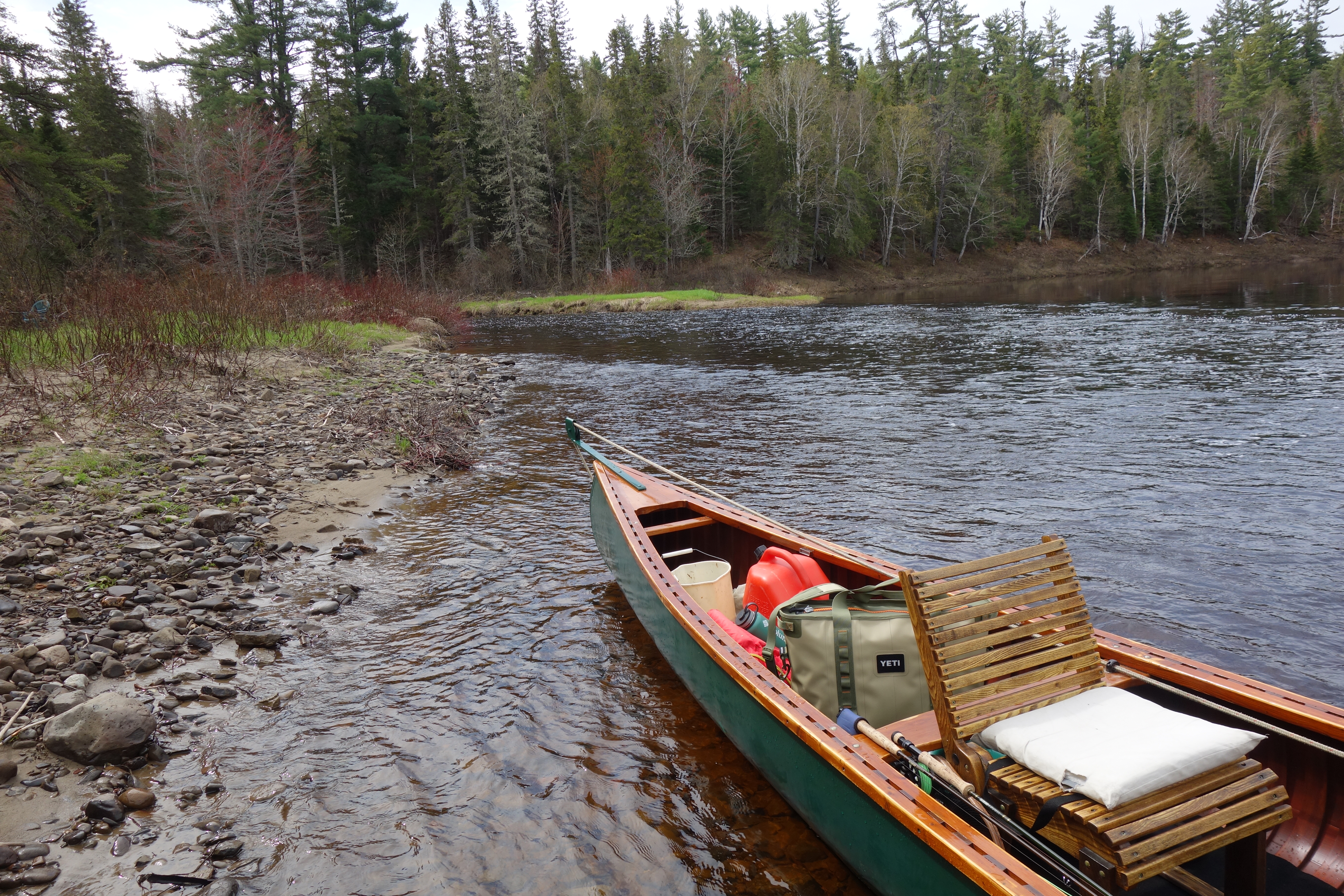
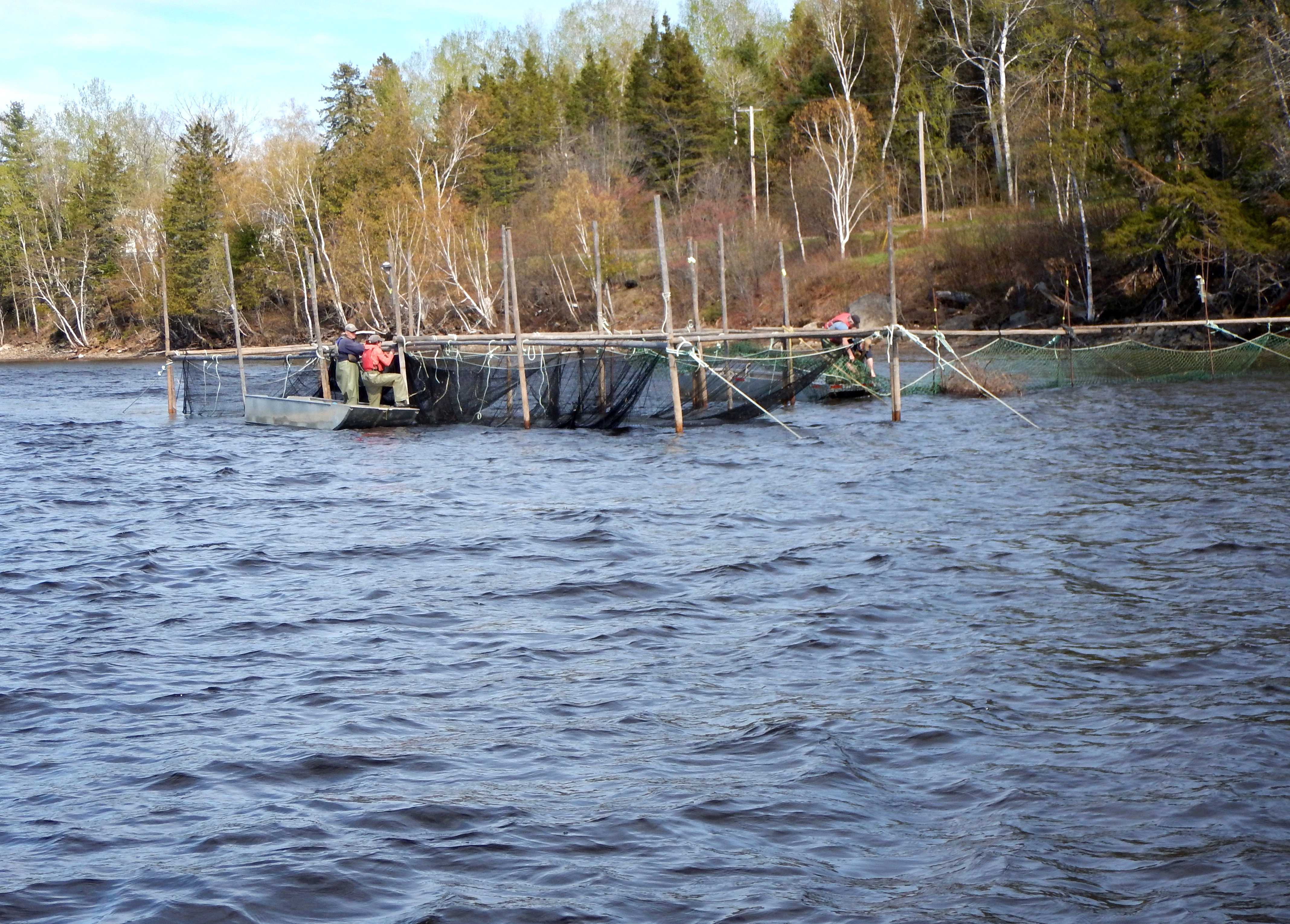
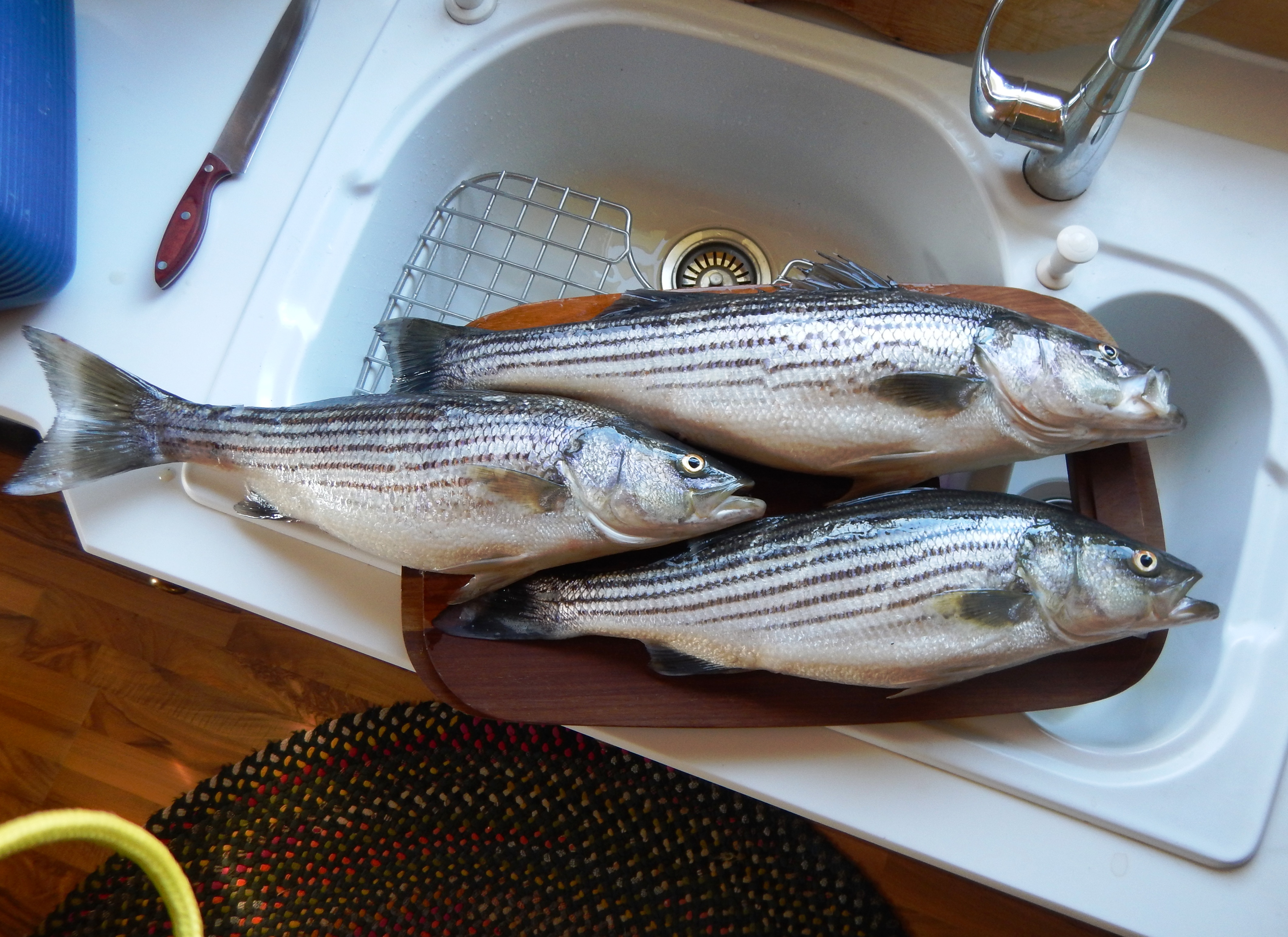
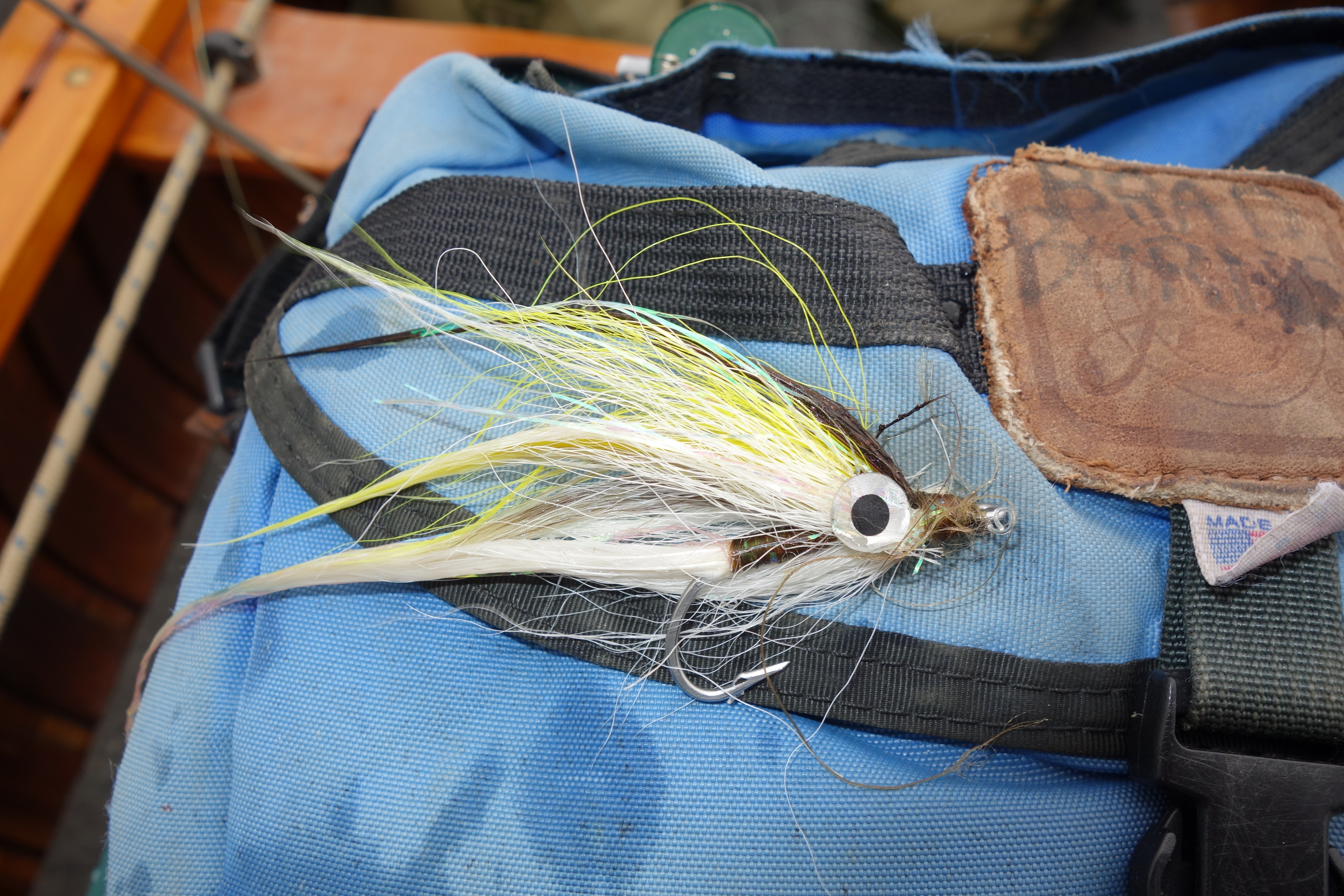
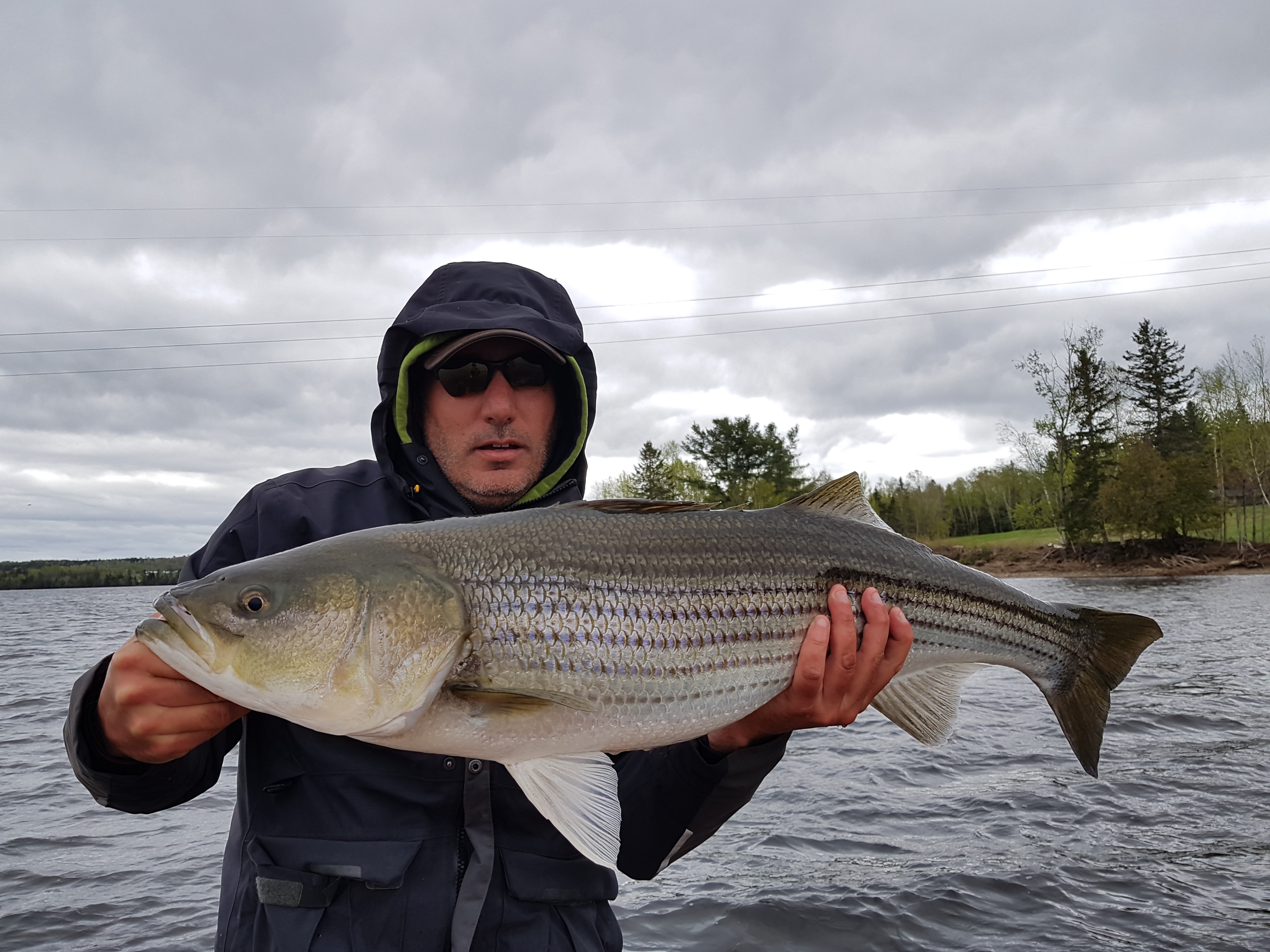
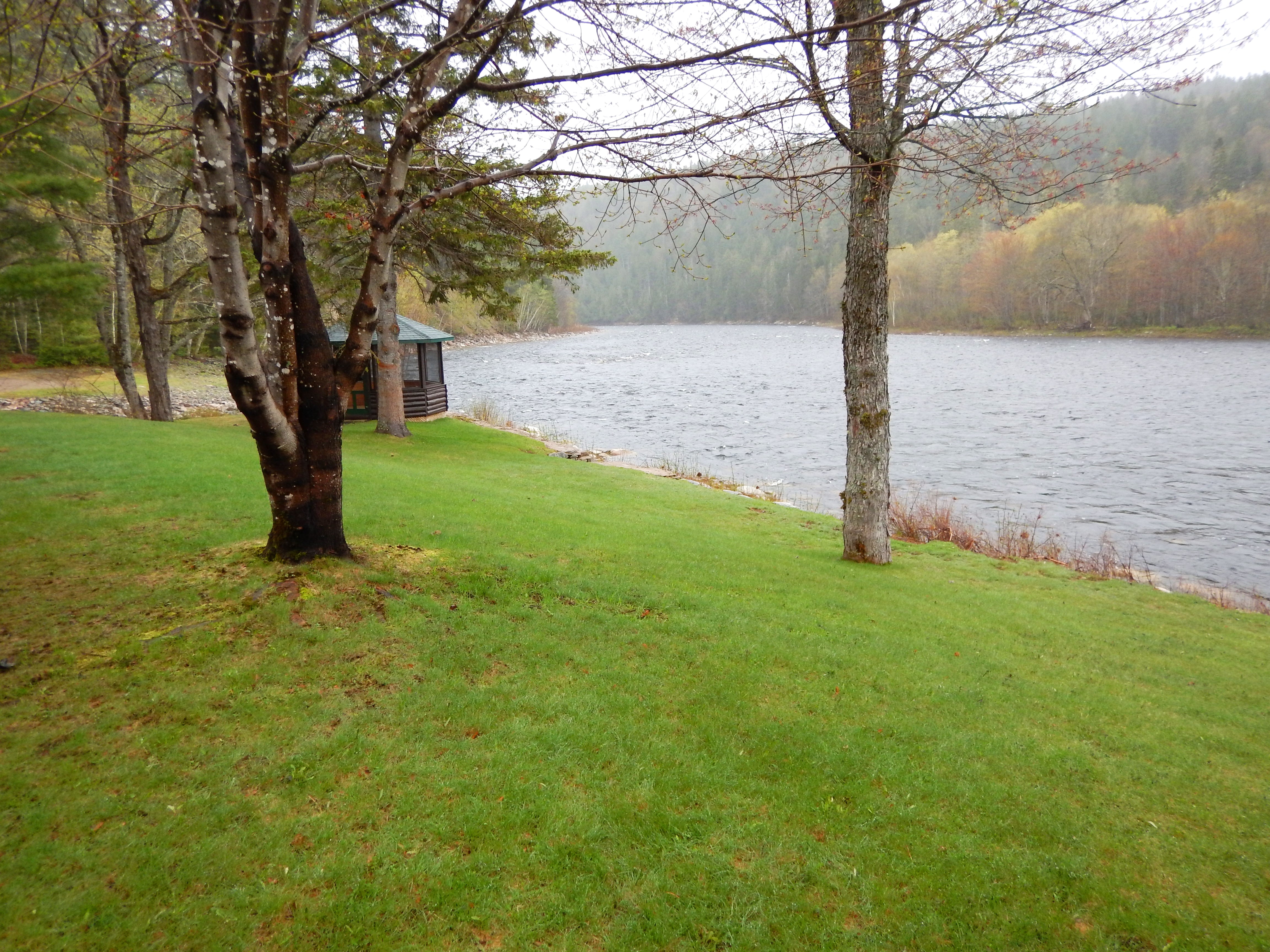

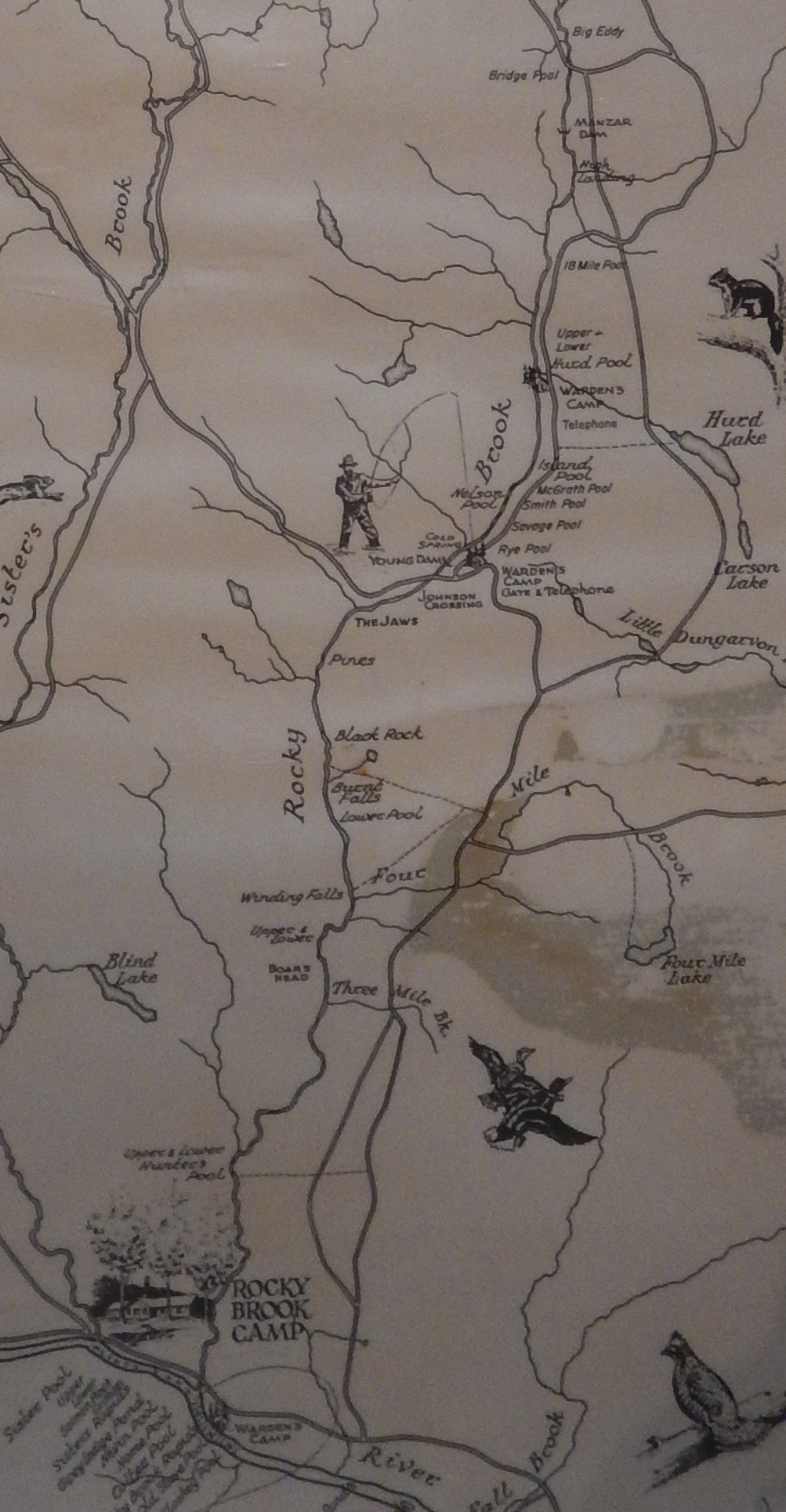



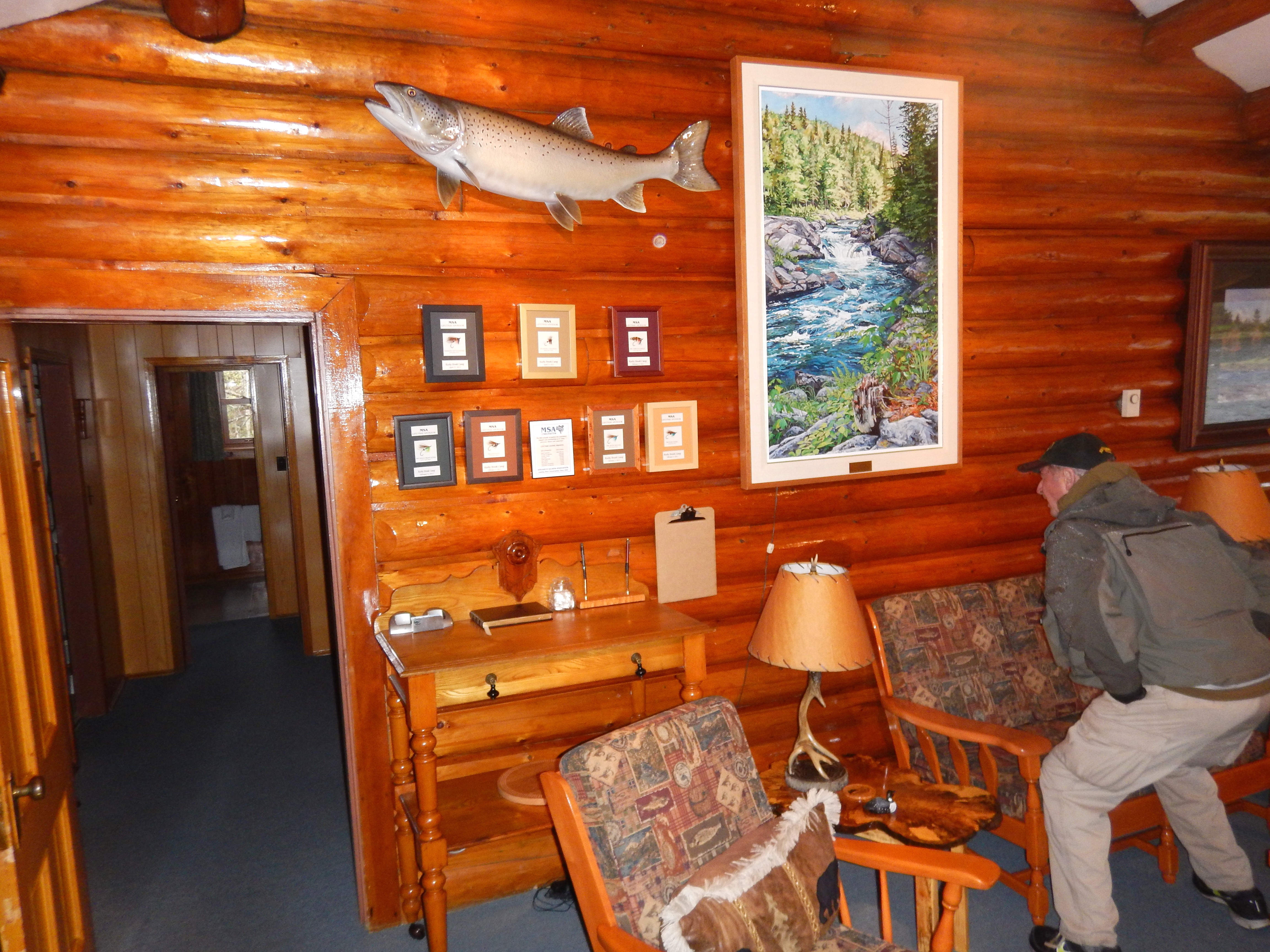
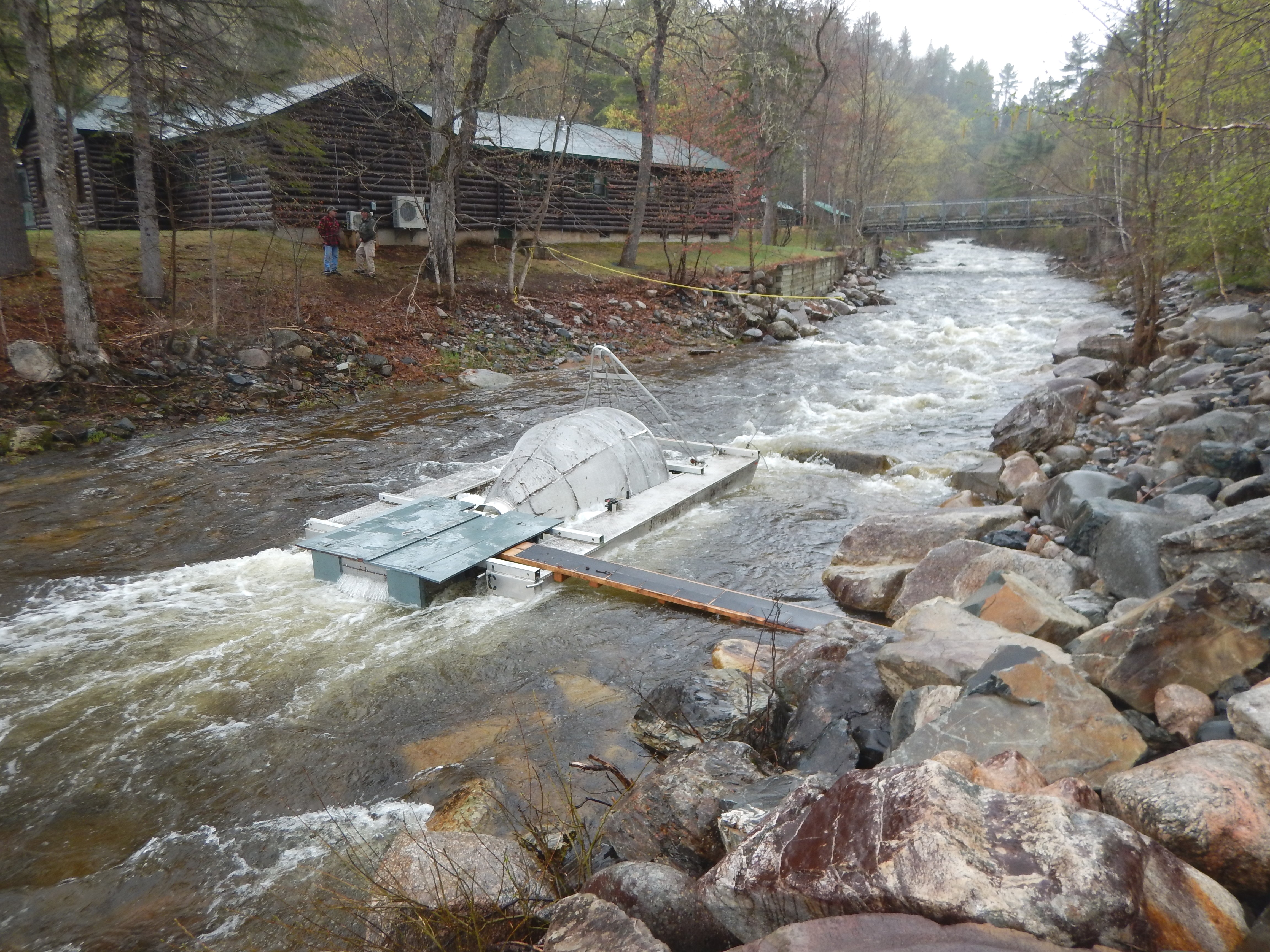
I am puzzled by DFO’s position on Striped Bass in the Miramichi. DFO seem to be protecting Stripers (with size and “take” limits) when I always considered the Miramichi to be primarily an Atlantic salmon river. Salmon smolts are Stripers’ favorite food while they are in the Miramichi to spawn, so if DFO continues to protect Stripers with limits, then I believe Atlantic salmon in the Miramichi are doomed.
BRT
Ben – I think that DFO’s position is that both salmon and striped bass are native to the Miramichi, and that both populations need to be protected. 15 years ago no retention of striped bass was allowed. You can now take 3 per angler per day and there is an aboriginal harvest allowed of 50,000 fish. Many think it is not enough, but it certainly is better than it was. No question the striper population is too much for the river, and hopefully DFO will continue to make adjustments to bring all the populations within equilibrium. Brad
Brad, a few bullet points:
Love the look of Rocky Brook river and camp with its immaculate interior. Now I’ll just have to try and place it on the map.
Jason with that 36inch striper – that’s some fish.
And Sixty smolts in a morning in the smolt trap seems healthy.
Thanks for your report and photos – it’s like being there.
Tight lines Henry
Agree with the comments above. Also, I had never seen a smolt wheel in action. Very interesting. Assume this is in support of the CAST program? Jim
Jim – the Rocky Brook wheel is used in conjunction with the MSA, ASF, and DFO as part of the smolt counting process. It has nothing to with CAST though I’m sure that they share the data with CAST. Brad
Hi Brad, just returned from 4 days at Bullock’s Lodge in Boiestown. Spent all days fishing stripers since there was no evidence of any sea trout in or around their water. Starting Wednesday we launched at the Micmac warf in Red Bank and fished down river every day thru Saturday June 1st for stripers. We had success immediately and it improved everyday as the water temps which began at 52 F got into the 60’s by Saturday night! Early Wednesday afternoon was slow but from 5pm on it was crazy. My son and I each landed over 50 fish with the largest of the day 28″and we filled our combined 6 fish limit with fish between 23-25 in. Thursday started very slow with only 2 fish in the first 4 hours but as we headed upstream we saw spawning fish just below the Red Bank bridge. We stopped to fish the tide change and were quickly rewarded with hits on every cast making it easy to quickly fill our limit again with fish at the upper end of the slot. The next two days the spawn continued and we had consistently good fishing every afternoon from 3pm til dark, again filling our limit each day with 23-26 in fish . Some interesting observations over the 4 days: 1) the fish again were bigger than the previous year with this years fish 2-3 inches larger on average and many more in 24-30in size, 2) Once the spawn begins Fly fishing is way more effective than the jigs and hardware of most of the locals. Friday night we had several boats of frustrated anglers come over to us for info. 3) The tan Kinky Muddler again was an absolute killer fly. 4) My son and I again did our part to reduce the striper population by taking 24 fish and had the pleasure to eat striper every night in camp and share the rest with our guide’s extended family. 5) I again wrecked my thumbs lipping fish……………
Bill Jacobus
Note: I met Micmac Ronnie Ward thru our guide Adam Munn in the parking lot Friday afternoon. Ronnie’s uncle Wilfred had guided me on my first trip to the Miramichi in 1966. As I talked to him he whipped out his cell phone and showed me a pic of an enormous male bright salmon he said he had caught the week before. The fish looked every bit of 25-30 lbs!! BTW I made Cerviche with fresh Striper and it was sensational.
Bill – did you happen to find any salmon smolts in the bass that you harvested? I checked the ones that I cleaned and found more or less nothing in their guts, but the smolt run was thought to be just really getting under way when we left. Brad
No I didn’t! I had the same experience last year too. Fish had nothing in their stomachs. DFO has a series of tech papers on their Striped Bass section of the recreational fisheries web site. The papers go back to 2010 or so. I read them all and came across their stomach analysis work. It’s an interesting read but they found 2/3-3/4 of the fish sampled had nothing in their stomachs. Of the fish with prey in them smolts were present in about 20%. The sampling however appears to have been pre spawning and spawning fish. My guess is it’s the post spawning fish that do the damage down in the lower estuary regions. Obviously the timing of both has to be perfect to create the potential conflict. Smelt and gasperaux made up the biggest percentage of prey fish found but it could be as their populations decrease smolts become more at peril. It certainly seems this is an area in need of more data yet it concerns me that DFO seems uninterested in studying it further. Also is MSA and ASF doing continuing smolt mortality studies? I know ASF was very instrumental in getting the 50,000 quota for the Mic Mac’s. I was told DFO held it up for lack of a distribution source for the fish and Bill Taylor jumped in a solved that in a couple of days.
Yes, I’m told that MSA, ASF and First Nations themselves all worked quite hard to get the FN quota. Ultimately, of course, this is between DFO and FN. I don’t see why they can’t allow non-FN fishers to catch these fish commercially too. It seems like reverse prejudice to me, but I’m not a Canadian policy maker.
I’m sure that the MSA/ASF smolt predation studies will continue. One great obstacle that must be overcome is to try and figure out just how much effect being tagged has on the smolt’s likelihood of being eaten by a striped bass. I have no guess on that except that I am sure that it probably has some effect.
Last year saw better survival of smolts than in the previous couple of years, and it corresponded with DFO estimating a reduced striper population. This year’s striper numbers are hard to understand. The bass were much more scarce than the year before all through the lower river this spring, and they were quite late getting to the spawning grounds. It sure sounds like there are plenty of them there right now, but just how the number compares to prior years is uncertain.